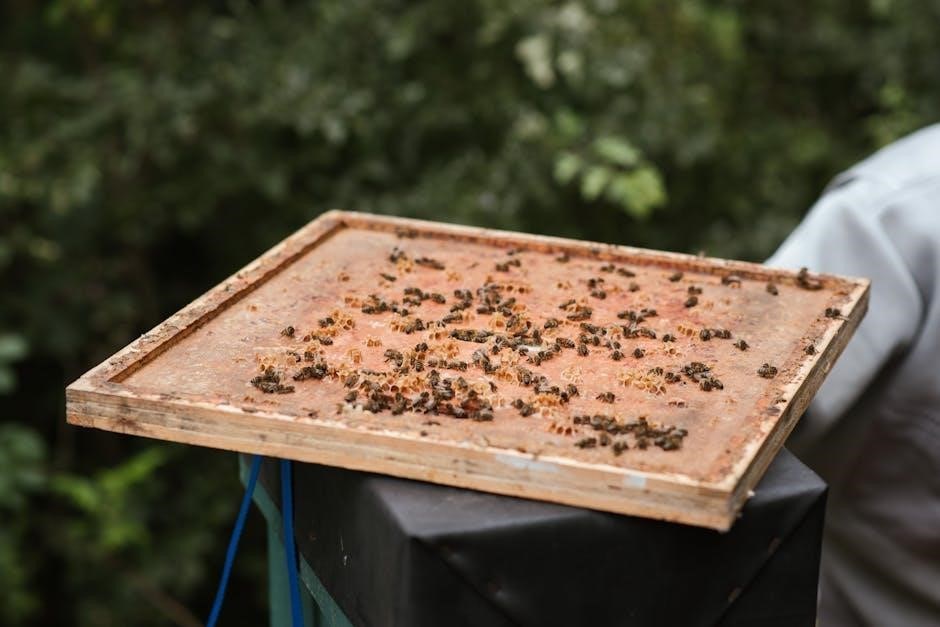Overview of the Langstroth Beehive
The Langstroth beehive is a popular choice among beekeepers due to its simplicity and effectiveness. It was invented by Reverend Langstroth in the mid-19th century and has since become a standard in the beekeeping industry. The hive is characterized by its rectangular shape and use of movable frames, which allows for easy inspection and maintenance. The Langstroth beehive is well-ventilated, which helps to prevent disease and pests, and its design makes it easy to add or remove frames as needed. This flexibility makes it an ideal choice for both beginner and experienced beekeepers. The hive’s design also allows for the use of a variety of foundation types, including wax and plastic, which can help to improve honey production and reduce the risk of disease. Overall, the Langstroth beehive is a reliable and efficient choice for beekeepers, and its popularity continues to endure due to its many benefits and advantages.
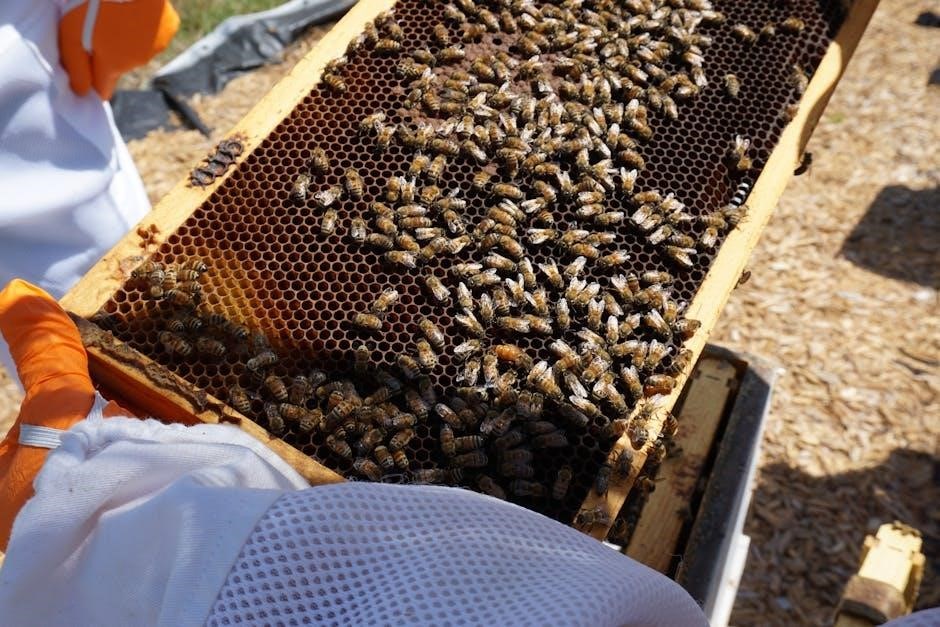
Benefits of Using 10-Frame Langstroth Beehive Plans
Using 10-frame plans offers improved honey production and easier hive management with pdf plans available online for construction and assembly purposes only.
Advantages of the Langstroth Design
The Langstroth design has several advantages that make it a popular choice among beekeepers, including its simplicity and ease of use. The design features a rectangular hive box with removable frames, making it easy to inspect and manage the hive. This design also allows for good air circulation and temperature regulation, which is important for the health and well-being of the bees. Additionally, the Langstroth design is well-suited for commercial beekeeping operations, as it allows for easy transportation and storage of the hives. The design also makes it easy to expand or contract the hive as needed, making it a versatile option for beekeepers of all levels. Overall, the Langstroth design is a well-established and widely-used design that offers many advantages for beekeepers, and its popularity can be seen in the many 10-frame Langstroth beehive plans available online in pdf format. The design is also easy to construct and assemble, with many resources available to help beekeepers get started.
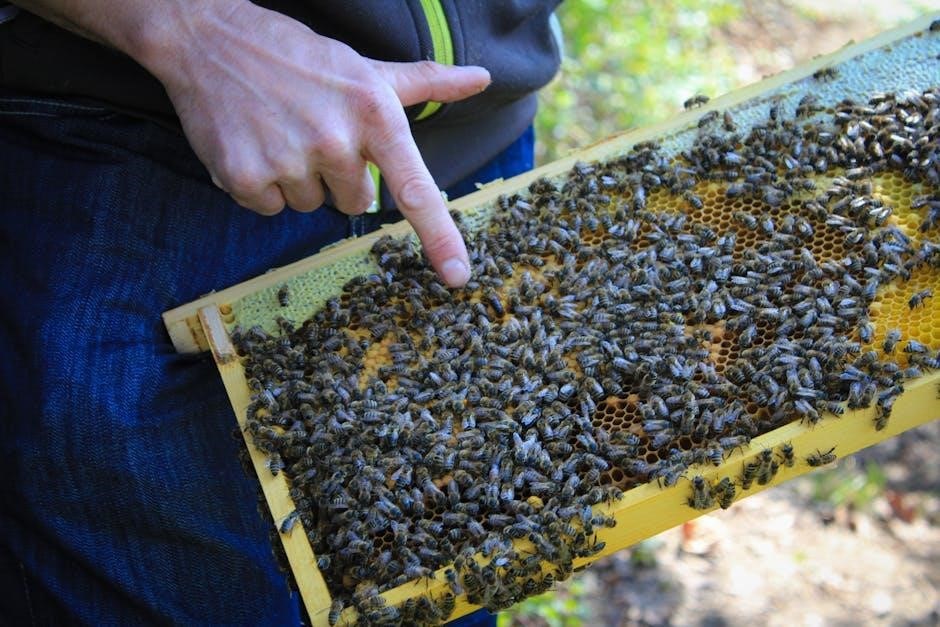
Materials Needed for Building a 10-Frame Langstroth Beehive
Western red Cedar and 3/4 lumber are primary materials needed for building a durable beehive with low maintenance requirements and available plans in pdf format online for construction purposes only.
Western Red Cedar as a Primary Material
Western red Cedar is a popular choice for building beehives due to its natural resistance to rot and insect damage, making it an ideal material for outdoor use. The wood is also durable and can withstand various weather conditions, ensuring the hive remains structurally sound. Additionally, Western red Cedar has a distinctive aroma that is unpleasant for insects, which helps to repel them and reduce the risk of infestation. This natural property makes it an excellent choice for beehive construction, as it helps to protect the bees and the hive from potential threats. When using Western red Cedar to build a 10-frame Langstroth beehive, it is essential to follow proper construction techniques to ensure the hive is well-ventilated and secure. By using Western red Cedar as the primary material, beekeepers can create a safe and healthy environment for their bees to thrive. The use of this material is widely recommended in 10-frame Langstroth beehive plans available in pdf format online.
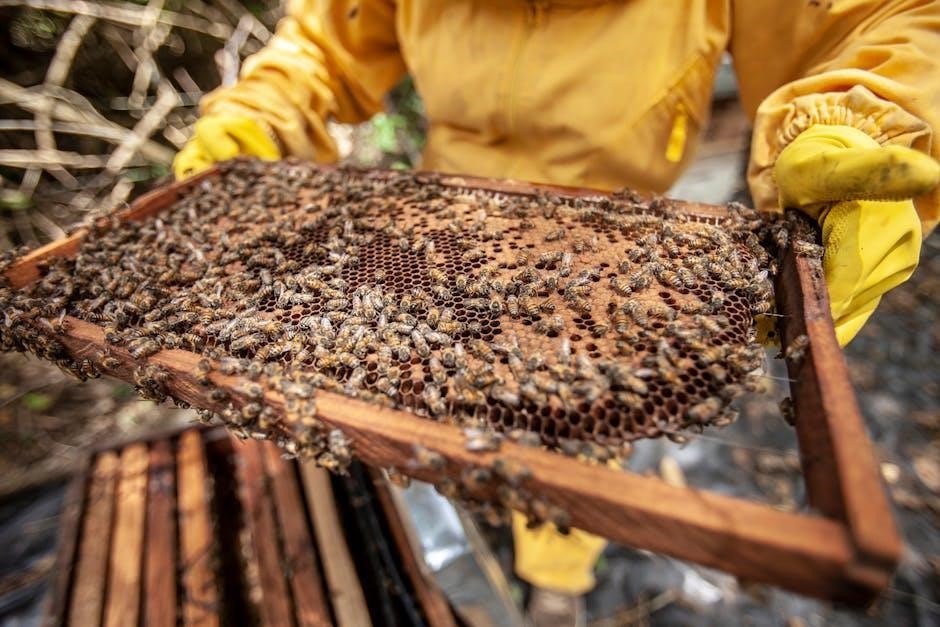
Step-by-Step Instructions for Building a 10-Frame Langstroth Beehive
Follow detailed instructions and diagrams to construct a 10-frame Langstroth beehive using pdf plans and essential tools for a successful build with precise measurements and assembly techniques online.
Assembly Jig for Precise Frame Construction
The assembly jig is a crucial tool for building a 10-frame Langstroth beehive, as it enables precise frame construction and ensures that all frames are identical and properly aligned. By using an assembly jig, beekeepers can avoid common mistakes and create a sturdy and well-constructed hive. The jig helps to maintain consistent spacing and alignment of the frames, which is essential for the health and well-being of the bees. With an assembly jig, beekeepers can build frames quickly and efficiently, saving time and effort in the long run. The jig can be used to construct frames of various sizes, making it a versatile tool for beekeepers who want to build different types of hives. Overall, an assembly jig is an essential tool for any beekeeper looking to build a high-quality 10-frame Langstroth beehive, and it can be used in conjunction with pdf plans to ensure accurate and precise construction. The use of an assembly jig can also help to reduce waste and improve the overall quality of the hive.
Downloadable 10-Frame Langstroth Beehive Plans in PDF Format
Downloadable plans in pdf format provide easy access to building a 10-frame Langstroth beehive with precise measurements and instructions online for free or purchase from reputable sources instantly available.
Barry Birkey’s Plans for a 10-Frame Langstroth Beehive
Barry Birkey’s plans for a 10-frame Langstroth beehive are a valuable resource for beekeepers, providing detailed instructions and measurements for building a high-quality hive. These plans are available in pdf format, making it easy to download and print them. The plans include a list of materials needed, as well as step-by-step instructions for assembling the hive. Barry Birkey’s plans are based on the traditional Langstroth design, which has been used by beekeepers for over a century. The plans are designed to be easy to follow, even for those with limited carpentry experience. The 10-frame Langstroth beehive is a popular choice among beekeepers, as it provides a large enough space for a healthy colony of bees to thrive. With Barry Birkey’s plans, beekeepers can build a high-quality hive that will provide years of service. The plans are available online, and can be downloaded instantly, making it easy to get started on building a new hive. Overall, Barry Birkey’s plans are a great resource for anyone looking to build a 10-frame Langstroth beehive.
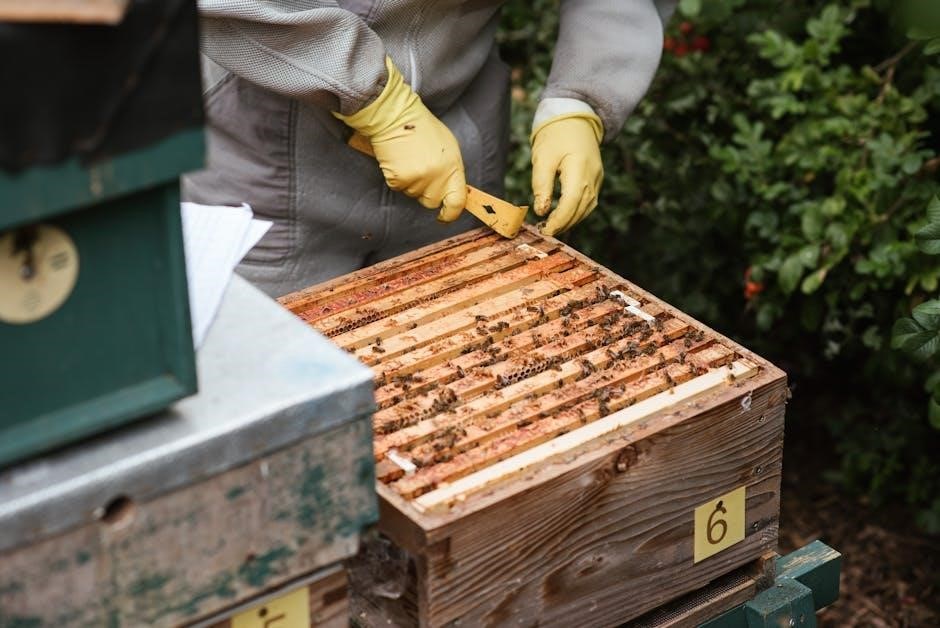
Additional Resources for DIY Beekeeping Equipment
For those interested in building their own beekeeping equipment, there are many additional resources available online. Websites such as Beesource and USDA offer a wide range of plans and instructions for building different types of beehives and equipment. These resources can be very helpful for beekeepers who want to build their own equipment, as they provide detailed instructions and measurements. Some websites also offer downloadable pdf files, which can be easily printed and used as a guide. In addition to plans and instructions, there are also many online forums and communities where beekeepers can share their experiences and ask for advice. These resources can be very valuable for beekeepers who are just starting out, as they provide a wealth of information and support. Overall, with the many resources available online, building DIY beekeeping equipment has become easier and more accessible than ever. Many beekeepers have successfully built their own equipment using these resources, and have reported great results. These resources are widely available and can be easily found online.
